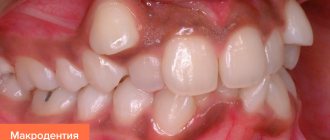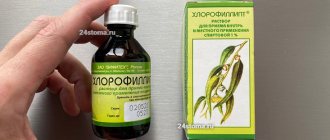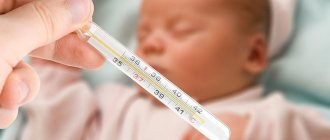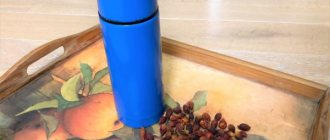Brushing your teeth is an important procedure that must be done correctly. Every person brushes their teeth every day and believes that this is a completely simple task. But dentists believe that most people do not know how to brush their teeth properly, which is where various diseases arise. Proper brushing of teeth is the key to oral health and a guarantee of a beautiful smile. If you neglect the correct technique for cleaning the oral cavity, this can cause the development of serious diseases. At a minimum, there will always be an unpleasant odor from the mouth, and the enamel will gradually darken.
Why do you need to brush your teeth?
The oral cavity is the most contact area of our body with the environment. We all know that bacteria live in our mouths. Teeth are designed for mechanical processing of food, the remains of which can get stuck in the interdental space. This is what provides favorable conditions for the life and reproduction of pathogenic microorganisms. Lack of regular and proper cleaning leads to the formation of soft plaque, which over time turns into tartar, which can only be removed in dentistry. Soft plaque is also dangerous because it releases acids that can destroy tooth enamel. Plaque leads to the formation of caries and causes a putrid odor from the mouth. If you regularly brush your mouth, following the correct cleaning technique, and visit the dentist from time to time for professional cleaning, these problems can be avoided. But usually people turn to dentistry only in cases where the disease has already arisen and is actively progressing. By following the correct technique for brushing your teeth, we will not give germs and bacteria any chance to cause the development of diseases.
Professional dental treatment with fluoride –
At the beginning of the article, we already told you that the initial stage of caries develops due to exposure to acid secreted by cariogenic bacteria. This acid dissolves the surface layer of enamel - as a result of which the enamel loses calcium, i.e. demineralization of the enamel occurs. However, there are therapeutic measures that can strengthen tooth enamel by saturating it with minerals (fluorine and calcium). This process is called tooth remineralization.
Remineralization is not only professional (carried out in a dental office), but it can also be easily done independently using the right quality products. At home, you constantly use toothpastes with fluoride or calcium, which also contribute to the remineralization of tooth enamel, despite moderate concentrations of active ingredients. To strengthen enamel in children and adults, dentists most often use the method of professional fluoridation of teeth (using highly concentrated varnishes and gels).
Professional fluoridation of teeth is more effective compared to fluoride-containing therapeutic and prophylactic toothpastes. For example, the fluoride concentration in dental varnish is usually 22,600 ppm, and conventional dental toothpastes contain a maximum of 1,450 ppm of fluoride. And in Colgate® Duraphat medicinal pastes (which we described above) – 2800 or 5000 ppm.
In what cases is it better to choose fluoride treatment of teeth at the dentist, and in what cases is it better to use medicated toothpastes with a high dosage of fluoride at home? Read the article on fluoridation of teeth (see link above). But in general, the recommendations of the World Health Organization (WHO) recommend that fluoride prevention of caries should include both directions: firstly, the constant use of low doses of fluorides at home, and secondly, periodic professional applications of high doses of fluorides at the dentist (1 time in 3- 6 months).
The mechanism of action of fluorides (explanations below the picture) –
- Demineralization - when the pH of the oral fluid drops to pH 5.5 (i.e. becomes acidic) - the surface layer of enamel begins to dissolve and lose calcium and other trace elements. This is the starting point for the development of caries. A pH below 5.5 means an acidic environment, which is formed in the oral cavity under the influence of cariogenic microorganisms that “digest” food debris into organic acids.
- Remineralization - the surface of the tooth is coated with fluoride varnish, which promotes the formation of a layer of calcium fluoride (CaF2) on the surface of the tooth, from which calcium and fluoride ions penetrate into the enamel surface. There, fluoride ions bind to hydroxyapatite (the substance from which enamel is made), turning it into fluorohydroxyapatite. The latter is much more resistant to acid, and its dissolution begins only at pH 4.5 (i.e. at a higher acid concentration in the oral cavity). This ensures the anti-caries effect of fluorides.
How often is cleaning necessary?
Dentists recommend using a toothbrush and toothpaste twice a day. In the morning, the procedure can be performed after the morning meal and in the evening it should be done before bed. The duration of the procedure should be at least three minutes. If you perform the steps incorrectly, the procedure will have no effect. In addition to cleaning the external and internal surfaces of teeth, every day you need to clean the interdental spaces where food debris accumulates. To do this, you need to purchase a special dental floss. It is inexpensive and sold in any pharmacy. Give preference to products made from quality materials. Using the floss is quite simple - it is inserted between the teeth, goes around the gum and very carefully removes plaque and food debris. By flossing daily, you can maintain proper oral hygiene. Also, rinses are highly valued in dental practice. You can find various solutions on sale - freshening breath, strengthening gums. Please note: daily mouthwash should be free of alcohol and chlorhexidine. The rinsing procedure must be performed for thirty seconds.
Also, don’t forget to clean after every meal. People who do not have problems with the oral cavity can use special chewing gums that can be used to clean the oral cavity immediately after eating for five minutes. In some cases, chewing gum can harm the enamel, so you should use mouthwash. You can find training videos online that clearly demonstrate how to perform the procedure correctly. Twice a year, as recommended by your dentist, you should undergo professional cleaning. What is the correct name for teeth cleaning in dentistry - professional oral hygiene. This procedure will eliminate those problems that cannot be eliminated at home. If necessary, your dental hygienist will provide brief instruction on how to properly brush your teeth.
How to use an irrigator correctly
The first step is to fill the reservoir with liquid.
There are special rinses and balms for the irrigator, but if they are not available, you can pour filtered boiled water. At the beginning of use, it is recommended to set the power of the irrigator to a minimum in order to prevent injury to the gums by a strong jet of water. You can gradually increase the pressure so that the procedure is comfortable. The irrigator is placed in the oral cavity, leaving a distance of several millimeters between the nozzle and the teeth. It is better to keep your mouth slightly open. Start cleaning from distant areas, moving the nozzle to the middle. The jet is directed from the gum to the crown at an angle to clean the enamel surface from plaque. Then - into the gum pocket to remove washed away plaque. You need to linger on the interdental spaces for a few seconds.
Dentists advise using the irrigator once a day. If teeth are prone to increased plaque and tartar formation, you can use the irrigator more often, including after meals. However, this device should not be abused, since too frequent exposure to a stream of water under pressure can disrupt the tight fit of the gums to the teeth, thereby increasing the distance between the teeth and gums.
After each use, it is necessary to rinse the irrigator with water, dry it and store it in a dry place. It is recommended to wash the irrigator once a month using special cleaning products.
Brushing your teeth correctly
Proper brushing of teeth is impossible without the right choice of toothbrush. To choose the right accessory, you should use the help of a competent dentist. Too soft brushes do not always clean the enamel efficiently, and too hard bristles can injure the gums. Therefore, it is better to choose medium-hard bristles. The brush head should be moderately movable in order to bend at an angle and clean not only the top surface, but also the side. Experts recommend brushing with electric brushes three times a week. The rotating head is able to remove plaque even in the most difficult to reach areas. For those who wear braces or suffer from gum disease, special ultrasonic accessories can be used. These brushes are not suitable for children under nine years of age.
Additional recommendations
When brushing, you should not put too much pressure on the brush, especially if you use a brush with medium or maximum hardness bristles - this can lead to damage to the mucous membranes and enamel, and even to the development of a serious pathology - wedge-shaped tooth defect. You should not use too much toothpaste.
To check the quality of cleaning, run your tongue over your teeth: they should be perfectly smooth, without the slightest roughness. You can also purchase staining tablets at the pharmacy that will help identify poorly cleaned areas of tooth enamel.
In addition, it is necessary to pay sufficient attention to the choice of toothbrush and toothpaste. These are two of the best tools for cleaning your teeth and mouth from food debris and harmful bacteria.
It must be remembered that replacing a toothbrush must occur in a timely manner - at least once every 3 months, otherwise a worn-out product with bristles damaged over time will not cope with its task effectively enough.
Don't use chewing gum as a substitute for brushing. Despite the proven benefits of this process, chewing gum cannot completely replace mechanical cleansing, in addition, it is significantly less effective in combating bacteria.
If you use a shared bathroom, use a special case, not a cup holder, to store brushes, since when you flush the toilet, bacteria spread within a radius of 2 meters and can land on the brush.
We hope that our recommendations for brushing your teeth will be useful to you and that your teeth will always delight you with whiteness. And so that their cleaning is more effective. Try Asepta PLUS Remineralization professional toothpaste. This unique product restores tooth enamel, reduces the sensitivity of teeth and gums and accelerates the regeneration of the oral mucosa.
Choosing toothpaste
To brush your teeth properly, you need to take a responsible approach to choosing toothpaste. It is necessary to select a product taking into account the condition of the oral cavity. Not all products are suitable for sensitive teeth. For people who suffer from rapid plaque formation, an antibacterial paste will be needed. Those who have increased gum bleeding will need to purchase a special medicated paste. To make the cleansing process comfortable and effective, it is better to give preference to products from well-known brands that have long proven themselves in the market. Before you buy a whitening paste, you need to know that such products mainly contain special enzymes that quickly remove plaque. Dentists do not recommend using whitening pastes for more than two months.
You should remember a simple rule: too much product reduces the effect of brushing. For one procedure, a pea-sized amount of paste should be enough.
Clinical researches
Clinical studies have proven that regular use of professional toothpaste ASEPTA REMINERALIZATION improved the condition of the enamel by 64% and reduced tooth sensitivity by 66% after just 4 weeks.
Sources:
- Report on the determination/confirmation of the preventive properties of personal oral hygiene products “ASEPTA PLUS” Remineralization doctor-researcher A.A. Leontyev, head Department of Preventive Dentistry, Doctor of Medical Sciences, Professor S.B. Ulitovsky First St. Petersburg State Medical University named after. acad. I.P. Pavlova, Department of Preventive Dentistry
- Evaluation of the clinical effectiveness of a combined drug of local etiotropic action in the treatment of inflammatory periodontal diseases (E.L. Kalichkina, E.A. Tyo, Z.Z. Abubakarova) E.L. Kalichkina, candidate of medical sciences, assistant of the department of therapeutic dentistry, Kemerovo State Medical Academy of Roszdrav, Kemerovo E.A. Tyo, MD, professor, head of the department of therapeutic dentistry, Kemerovo State Medical Academy of Roszdrav, Kemerovo Abubakarova, assistant of the department of therapeutic dentistry, Kemerovo State Medical Academy of Roszdrav, Kemerovo GOU HPE Kemerovo State Medical Academy of Roszdrav , Kemerovo
- Clinical and laboratory assessment of the influence of domestic therapeutic and prophylactic toothpaste based on plant extracts on the condition of the oral cavity in patients with simple marginal gingivitis. Doctor of Medical Sciences, Professor Elovikova T.M.1, Candidate of Chemical Sciences, Associate Professor Ermishina E.Yu. 2, Doctor of Technical Sciences Associate Professor Belokonova N.A. 2 Department of Therapeutic Dentistry USMU1, Department of General Chemistry USMU2
We brush our teeth correctly
To properly brush your teeth, you need to follow some simple rules. Let's start with the fact that in addition to cleansing the tooth surface, attention should be paid to the tongue and cheeks. The effectiveness of the entire procedure will depend on how correct the brush movements are. You need to move the brush vertically, from the gum to the lower edge of the tooth. If the movements are circular or horizontal, this will lead to even greater spread of plaque.
Let's start brushing our teeth:
- Before each procedure, the brush should be rinsed well with water.
- Apply the paste the size of a small ball.
- First we clean the upper row of teeth. Brush movements should be at an angle of approximately 45 degrees.
- Using vertical movements from the gums to the edge of the tooth, we clean the surface. It is necessary to move in the direction from the back to the front teeth.
- Once the outside is cleaned, move on to the inside.
- Chewing surfaces can be cleaned using horizontal movements.
- Now we are working on the lower dentition. The movements are also performed at an angle, but now from the bottom up.
- Then you need to pay attention to the tongue, where a huge amount of bacteria accumulates. Using soft and smooth movements, moving from root to tip, we clean the surface.
- Now you can use dental floss and treat the interdental spaces. For one cleaning you will need about 30 cm of material. Movements must be careful, because the thread can easily injure the gums.
- The final stage is rinsing for half a minute with a special solution.
Now you need to prepare the brush for the next use. You can treat it with boiling water or soap it and leave it for a while. Before each use, the accessory must be thoroughly rinsed with water. Never use someone else's brushes. Try to change the accessory once every three months.
Toothbrush hardness
The stiffness of the brush is determined by the diameter of the fiber - the larger it is, the stiffer the brush will be. Nowadays, manufacturers often indicate the degree of hardness on packaging: very soft (ultra soft, extra soft), soft (soft), medium (medium), hard and very hard (hard).
Very soft brushes are suitable for children under 5 years old and people with sensitive teeth. Soft brushes - for children from 5 to 12 years old, as well as for severe pain in the teeth and gums. Medium hardness brushes are suitable for children over 12 years old and adults.
Hard and very hard brushes are not recommended for use without consulting a doctor. Such brushes can injure the gums and cause abrasion of the hard tissues of the teeth.
The benefits and harms of the procedure
Having understood the theory of professional teeth cleaning (what it is, what types there are, how the dentist does this procedure), the patient is naturally interested in the advantages and disadvantages. There are many more advantages, these include:
- aesthetically attractive appearance of rows after hygienic manipulations;
- elimination of unpleasant odor from the oral cavity due to getting rid of colonies of pathogenic microorganisms;
- an integrated approach (not only removes accumulated plaque, but also prevents the development of serious dental diseases);
- absence of pain (except when discomfort is associated with pathological conditions and other factors listed in the previous subsection).
Unfortunately, there are also negative sides:
- gum sensitivity increases;
- the risk of injury to the enamel layer increases;
- infection is possible, so some patients are prescribed antibacterial drugs after visiting a hygienist.
Which brush to use
As we found out earlier, you should choose a toothbrush based on the sensitivity of your teeth. Dentists recommend using brushes with low or medium hardness.
Stiffer brushes can only be used as prescribed by a specialist and all recommendations are followed. Otherwise, you may damage the surface of your teeth and soft tissues.
Electric toothbrushes are not as effective as they might seem. They do not sufficiently clean the surface of the tooth and drive food debris into the space between the tooth and gum. It is better to opt for a regular brush with a hardness that suits you.
Care products - paste selection
In general, the action of the cleaning mixture is aimed at solving two problems: disinfection and enhancing the mechanical work of the brush. To achieve maximum efficiency, foaming agents and abrasives are added to the composition. Such particles intensively polish the enamel, eliminating harmful microorganisms.
When choosing from the abundance of products presented by manufacturers, it is first necessary to take into account individual oral problems. If the gums are inflamed, the presence of abrasive components should be discarded. The best option in this case would be therapeutic and prophylactic formulations. They have a pronounced anti-inflammatory effect. In case of increased sensitivity, preference should be given to those brands that contain strontium or potassium chloride.
While watching a video on how to properly brush your teeth with a regular toothbrush, don’t forget that just because you don’t have any dental problems yet doesn’t mean they can’t appear in the future. There is always a risk. For preventive purposes against periodontitis and caries, it is necessary to use a paste with useful components: herbal extracts, seaweed extracts, fluoride. These components prevent the occurrence of diseases in the oral cavity. However, you should not use exclusively fluorine-containing compounds. It is better to alternate them with other types of cleaning products.
Optimal quantity
When cleaning, squeeze out a strip approximately 5 mm long onto the brush. A small piece is enough to carry out a full procedure and provide effective protection. There is no need to increase the rate, especially when it comes to abrasive compounds. Otherwise, the enamel layer may be severely depleted, which will lead to problems.
General principles of good oral hygiene
The first and most important rule, which even children know, is the immutable truth that teeth should be brushed twice a day. This must be done correctly, with a specially selected brush. In addition, it is necessary to additionally clean the interdental spaces using floss.
But there are also nuances that not everyone knows:
- For dental health, it is necessary to adhere to a proper diet, avoiding snacks between main meals;
- choose toothpastes and rinses containing fluoride, which strengthens the enamel;
- after brushing your teeth and eating, use rinses that will destroy bacteria where the toothbrush cannot reach;
- Brush your teeth for at least two minutes.
Don't skimp on brushing your teeth properly. This can lead to serious problems in the future.








